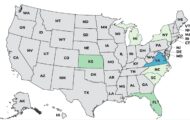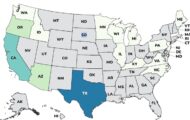Google and Harvard University have developed a new method for identifying restaurants that may be the source of food poisoning outbreaks much more quickly than traditional methods. The method is called FINDER (Foodborne IllNess DEtector in Real time), which uses web search and location data. Most food poisoning outbreaks are linked to restaurants and delis.

Traditionally, foodborne illness outbreaks are investigated after people go to the doctor when they are sick. Officials then interview those patients to see if there is a common denominator in what they ate or where they ate before they got sick. Or officials are alerted to a potential outbreak through PulseNet, which is an aggregate of bacterial DNA taken from ill persons and categorized.
What is FINDER?
FINDER is actually quite simple. It uses anonymous and aggregated web search and location data using information from people who visited a restaurant and then searched for food poisoning terms and advice. The scientists found that restaurants identified by FINDER are three times more likely to be found unsafe during inspections as restaurants identified with current methods.
This method also points up an interesting fact. In 38% of the cases, the restaurant that may be associated with the illness was not the last one the patients visited. That highlights the fact that the food that made you sick is usually not the last one you ate.
FINDER will be used to identify restaurants that may have health code violations that could cause illness. lt applies machine learning to Google search using location data. The system finds searches for foodborne illness terms, then identifies restaurants visited by those searchers.
Researchers used the model in Las Vegas and Chicago. Restaurant inspectors in those cities were given a list of restaurants identified by FINDER, and added those to their rounds of typical inspections.
FINDER Results
The results were startling. Of the restaurants that FINDER identified, 52.3% had health code violations and were found unsafe. Only 24.7% of restaurants on the regular routine inspection rotations were termed unsafe.
Then, the researchers compared the FINDER results to restaurants that were inspected because of consumer complaints. They only used Chicago restaurants for this category, since Las Vegas restaurant customers are transient. The overall rate of unsafe restaurants identified by FINDER was 52.1%, and the rate of unsafe restaurants from consumer complaints was 39.4%.
FINDER also found restaurants that had more serious food safety violations. Restaurants with more food safety violations are more likely to age linked to an outbreaks. And FINDER can pinpoint the specific facility more accurately than individual customer reports. People usually blame the last restaurant they ate at for their illnesses, which delays inspection at the culpable restaurant and may lead to more illnesses.
In the end, though, researchers found that while FINDER is more accurate and more timely in identifying restaurants that may be causing illness, they think that, at this time, it should be used as a supplemental tool, and isn’t ready to completely replace the current restaurant inspection system.




